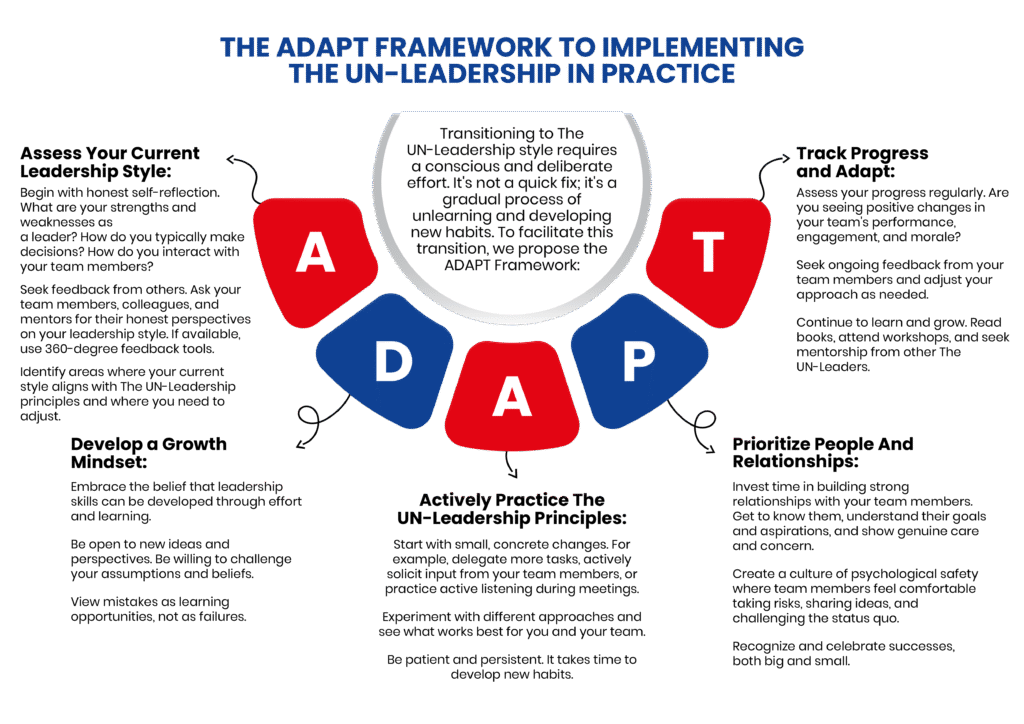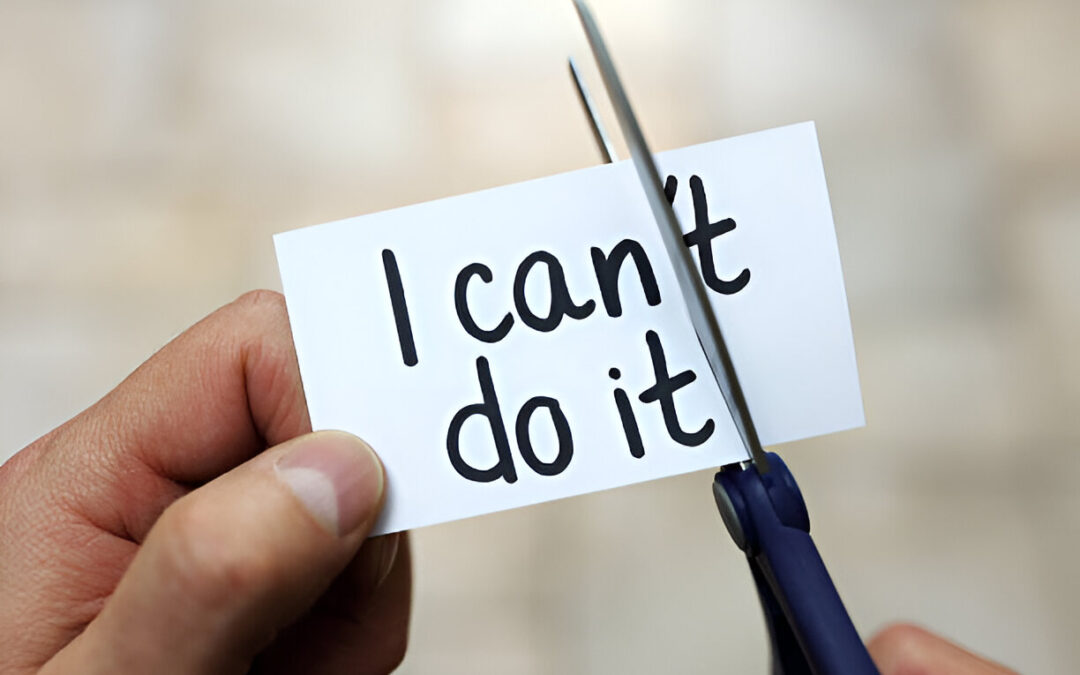The world is evolving at an unparalleled rate. The emergence of artificial intelligence, automation, and swift technological progress is transforming industries, economies, and labor. Conventional, hierarchical, command-and-control leadership paradigms are progressively becoming obsolete in this changing world.
Strategies that were effective in a stable, predictable environment are now demonstrating inadequacy and may even be harmful to organizational success. Employees seek increased autonomy, meaningful engagement, and connectivity, whereas organizations necessitate enhanced agility, creativity, and flexibility.
Such an evolution requires a fundamental transformation in leadership philosophy—transitioning from inflexible hierarchies to a more empowering, collaborative, and human-centered methodology. It involves not merely the adoption of new technologies but the embrace of a leadership style that prioritizes individuals, cultivates innovation, and accepts perpetual change.
Today, we will examine the constraints of conventional leadership, present the fundamental tenets of the contemporary “Un-Leadership” paradigm, and offer a pragmatic framework for integrating this transformative approach into your personal and professional endeavors.

Why Traditional Leadership is Struggling:
Conventional leadership, commonly characterized by a hierarchical structure, authoritative decision-making, and a focus on control and adherence, perfectly suited the industrial era. This paradigm may provide efficiency and consistency in predictable processes and well-defined responsibilities. Nevertheless, the contemporary workplace is far from predictable.
Several key factors contribute to the declining effectiveness of traditional leadership:
Accelerated Technological Transformation: Artificial intelligence, automation, and digital disruption are perpetually redefining sectors. Traditional leadership, characterized by protracted decision-making and reluctance to adapt, finds it challenging to maintain momentum.
Heightened Complexity: Business challenges are increasingly intricate and interrelated, necessitating varied viewpoints and cooperative resolutions. Top-down tactics frequently neglect to utilize the organization’s collective intelligence.
Transforming Workforce Anticipations: Employees, especially younger generations, desire more than mere financial compensation. They seek meaning, autonomy, flexibility, and possibilities for advancement. Conventional leadership, which prioritizes control and adherence, frequently neglects these requirements, resulting in disengagement and elevated turnover rates.
The Ascendance of Remote Work: The transition to remote and hybrid work paradigms necessitates distinct leadership approaches. Conventional direct oversight and control techniques are less efficacious when teams are geographically distributed.
Globalization and Diversity: Organizations are increasingly heterogeneous, necessitating executives capable of effectively managing and utilizing multiple perspectives, ethnicities, and cultures. Conventional, frequently uniform, leadership frameworks may encounter difficulties with this complexity.
The repercussions of adhering to obsolete leadership paradigms are considerable: inhibited innovation, less employee engagement, limited agility, and ultimately, reduced competitiveness. Organizations that do not modify their leadership strategies risk obsolescence. The fissures in its foundation are not superficial. They signify a fundamental conflict between the requirements of the contemporary world and a paradigm designed for the past.
The concept of “A New Paradigm for a New Era” suggests a shift away from traditional leadership models.
“The Un-Leadership” signifies a divergence from the conventional command-and-control paradigm. It is not a matter of completely forsaking leadership; rather, it involves discarding antiquated traditions and adopting a more empowering, collaborative, and human-centered methodology. It pertains to guiding individuals rather than dominating them.
The fundamental tenets of The Un-Leadership encompass
Empowerment and Independence: They enable their team members to assume responsibility and make decisions rather than resorting to micromanagement. They establish explicit objectives and expectations while entrusting their personnel to determine the most effective means of attainment.
Collaboration and Co-creation: They cultivate a culture of collaboration that values varied perspectives and encourages the open exchange of ideas. They acknowledge that optimal solutions frequently arise from collaborative intellect.
Authenticity and Vulnerability: These leaders exhibit genuineness and transparency. They readily own their errors and exhibit vulnerability, which helps cultivate trust and enhance relationships.
Servant Leadership: They pay special attention to their team members by offering assistance, resources, and guidance. They perceive their position as serving others rather than being served.
Flexibility and Agility: They welcome change and are perpetually acquiring knowledge and adjusting. They embrace ambiguity and uncertainty, fostering exploration and invention.
Emphasize Purpose and Significance: They link team members to a broader objective, elucidating how their contributions align with the organization’s overarching mission. This sense of purpose fosters engagement and motivation.
Emotional Intelligence: They possess a keen awareness of their emotions as well as those of others. They possess expertise in communication, dispute resolution, and the cultivation of robust relationships.
This approach is not merely advantageous; it is essential in today’s swiftly evolving environment. Organizations that adopt the UN-Leadership principles are more effectively equipped to attract and retain premier talent, stimulate innovation, adapt to change, and attain sustained success. It represents a transition from perceiving employees as mere components of a system to acknowledging people as vital contributors possessing distinct abilities and viewpoints.
The consequences of clinging to outdated leadership models are significant: stifled innovation, decreased employee engagement, reduced agility, and ultimately, diminished competitiveness. Organizations that fail to adapt their leadership approach risk being left behind. The cracks in this foundation aren’t superficial. They represent a fundamental mismatch between the needs of the modern world and a model made for the past.

The ADAPT Framework to Implementing The UN-Leadership in Practice
Adopting the UN leadership style necessitates a purposeful and intentional endeavor. It is not an immediate solution; it is a gradual process of unlearning and cultivating new behaviors. We propose the ADAPT Framework to enable this shift.
A-Assess Your Current Leadership Style:
- Commence with sincere self-examination. What are your leadership strengths and weaknesses? What is your usual decision-making process? What is your method of engaging with your colleagues?
- Solicit comments from others. Solicit candid feedback regarding your leadership style from your team members, coworkers, and mentors. Utilize 360-degree feedback instruments if accessible.
- Determine the aspects of your existing style that correspond with the UN Leadership principles and identify the areas requiring modification.
D – Develop a Growth Mindset:
- Adopt the belief that diligence and education can cultivate leadership abilities.
- Embrace novel concepts and viewpoints. Be prepared to interrogate your assumptions and convictions.
- Perceive errors as opportunities for learning rather than as failures.
A-Actively Practice UN-Leadership Principles:
- Initiate with minor, tangible modifications. For instance, assign additional responsibilities, aggressively seek feedback from your colleagues, or engage in active listening during discussions.
- Explore many methodologies to determine the most effective for you and your team.
- Exhibit patience and perseverance. Forming new habits requires time.
P – Prioritize People and relationships.
- Devote time to cultivating robust relationships with your team members. Acquaint yourself with them as individuals, comprehend their objectives and ambitions, and demonstrate authentic care and consideration.
- Foster a culture of psychological safety in which team members feel at ease taking chances, articulating ideas, and questioning the status quo.
- Identify and commemorate achievements, regardless of their magnitude.
T – Track Progress and Adapt:
- Consistently evaluate your advancement. Are you observing favorable improvements in your team’s performance, engagement, and morale?
- Solicit continuous input from your team members and modify your strategy accordingly.
- Persist in acquiring knowledge and developing. Engage in reading literature, participate in workshops, and pursue mentorship from coaches, consultants, or other community leaders.

This framework offers a guide for the incremental adoption of the UN Leadership principles. You can tailor this framework to your unique circumstances and requirements, as it is not a fixed formula. The essential factors are intentionality, consistency, and commitment to the process.
Leading as a Leader in the Age of AI and Technology
The emergence of AI and technology poses both obstacles and opportunities for leaders. Although some apprehend that AI will supplant human employment, the reality is that it will probably alter the essence of work, generating new positions and necessitating new competencies. In this changing environment, the distinctively human attributes of leadership—empathy, creativity, critical thinking, and emotional intelligence—will gain more significance.
Artificial Intelligence can automate repetitive operations, evaluate data, and generate predictions. Nonetheless, it is incapable of emulating the human ability for connection, inspiration, and moral discernment. These attributes will characterize effective leadership in the era of AI.
The UN-Leaders will be essential for:
- Addressing Ethical Dilemmas: AI presents intricate ethical inquiries necessitating human discernment and principles.
- Enhancing Human Connection: The necessity for human connection and a sense of belonging will escalate in a society increasingly governed by technology.
- Fostering Creativity and Innovation: AI can enhance human creativity but cannot supplant it. Leaders must cultivate conditions conducive to the flourishing of human innovation.
- Fostering and Guiding Talent: As occupations transform, leaders must assist their team members in acquiring the skills and knowledge necessary to excel in the modern workforce.
- Establishing Trust and Transparency: In a time of heightened data privacy issues and algorithmic bias, leaders must cultivate trust and transparency with their teams and stakeholders.
The future of leadership is not competing with AI, but rather harnessing its strengths while emphasizing the distinct human attributes that enhance our effectiveness as leaders. The Un-Leadership, which prioritizes empathy, collaboration, and purpose, is particularly well-equipped to address this difficulty.
Concluding Remarks:
The shift from conventional leadership to a more contemporary approach The Un-Leadership approach is not merely a fad; it is an imperative. The swift advancement of technology, shifting workforce expectations, and growing complexity necessitate a new type of leader—one who is adaptive, compassionate, empowering, and centered on human connection. Although conventional leadership paradigms were effective in the past, they are inadequate for addressing the issues of the 21st century.
The ADAPT Framework outlined herein offers a pragmatic guide for cultivating the competencies and mentality essential for success in our contemporary epoch. It involves accepting transformation, promoting collaboration, and prioritizing individuals.
The paramount asset in any firm is its human capital, and effective leadership entails maximizing the potential of that resource.
Are you ready to embrace the future of leadership? Arrange a discovery call today to examine the implementation of The UN-Leadership principles within your organization and foster a more resilient, engaged, and successful team.










